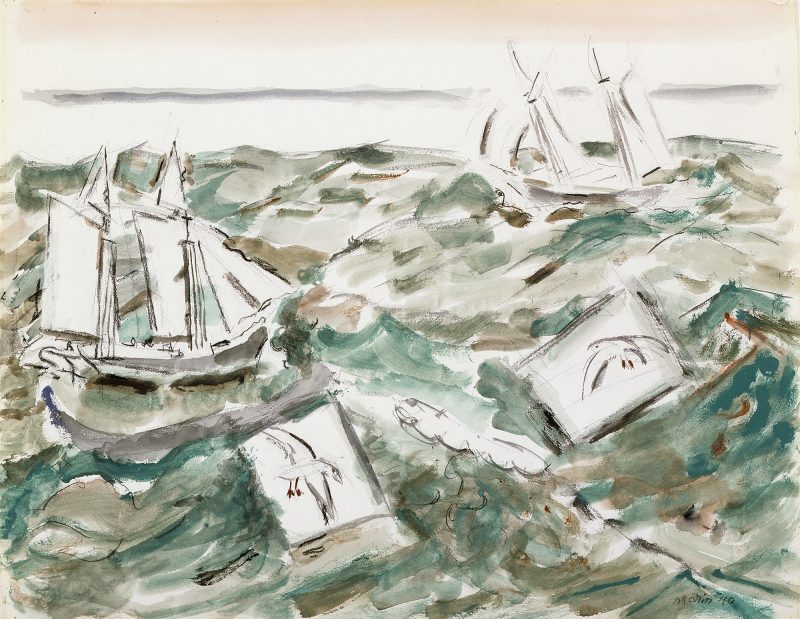
Boats and Gulls
Marin, John
1940
Artwork Information
-
Title:
Boats and Gulls
-
Artist:
Marin, John
-
Artist Bio:
American, 1870–1953
-
Date:
1940
-
Medium:
Watercolor and charcoal on paper
-
Dimensions:
18 11/16 x 23 5/8 in.
-
Credit Line:
Wichita Art Museum, Roland P. Murdock Collection
-
Object Number:
M75.48
-
Display:
Not Currently on Display
About the Artwork
Whether in the form of a placid harbor, a peacefully flowing river, or a powerfully churning ocean, water is continually present in the work of John Marin. In his maturity, Marin expressed his love of water not only in his art but also in his life, spending several months each year on the Maine coast. In 1914 the artist purchased a small, uninhabitable piece of land in northern Maine, which he proudly named “Marin Island.” In the 1920s Marin spent many of his summers in the Stonington-Deer Island area of Maine, on Penobscot Bay. In 1933 Marin visited Cape Split, Maine for the first time. He returned the following summer with his family and bought a cottage there. Cape Split differed significantly from other Maine locations Marin had inhabited. The sparsely populated land was rugged, isolated, and accessible only via difficult dirt roads. Marin thrived in this challenging environment and responded to it in his painting. He spent every summer on Cape Split until his death in 1952.
Boats and Gulls, originally entitled Cape Split, Maine, was first exhibited in December 1940 at Alfred Stieglitz’s gallery An American Place. Marin employed quick, thin dashes of black pigment on white paper to form a high horizon and the outlines of two ships and two birds. The curious, box-like shapes around the gulls are a common motif in Marin’s art, appearing frequently in his work in various forms. Marin often used lines of paint or graphite as a framing device around an entire composition, as in Region, Trinity Church, N. Y.C. of 1926-36. He also commonly framed sections of seemingly empty space, as in The Fog Lifts of 1949. He included individual forms such as the birds of Boats and Gulls inside areas of negative space, possibly to create a sense of depth in the painting or to suggest a series of movements across the paper.
In Boats and Gulls, the areas around the enclosed birds are painted with cool greens and browns, laid down with vigorous strokes that describe a tumultuous sea. A contemporary reviewer observed that “no one surpasses [Marin] in turning the sea inside out and hence in suggesting its restlessness.”1 But in Boats and Gulls the heaving ocean seems to have strangely little effect on the boxed-in birds or the boats that calmly settle in between its cresting and crashing waves.
1. J.W.L.,”Marin and Other Marines: Three Exhibitions,” Art News 39 (21-28 December 1940): 11.